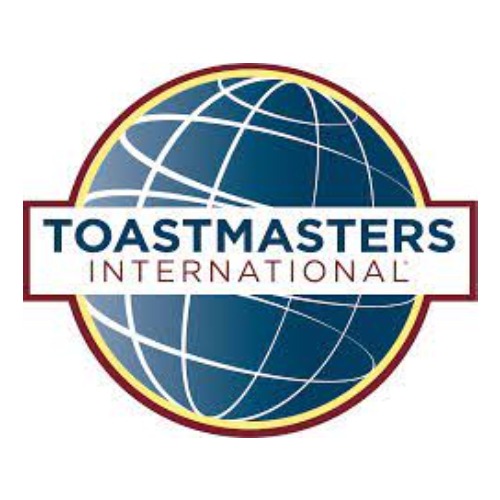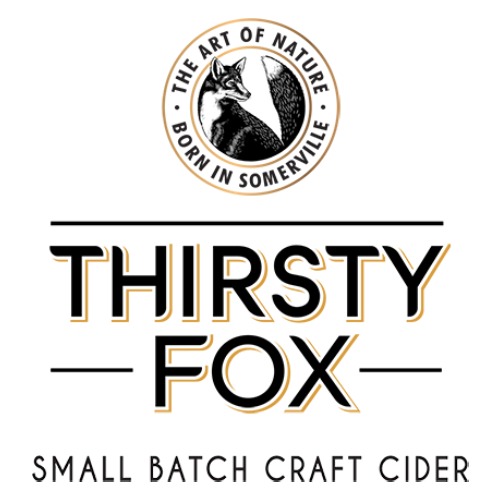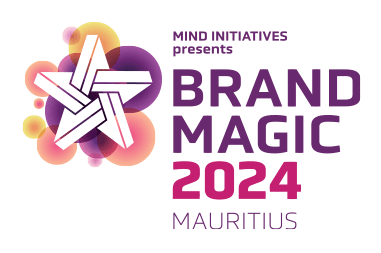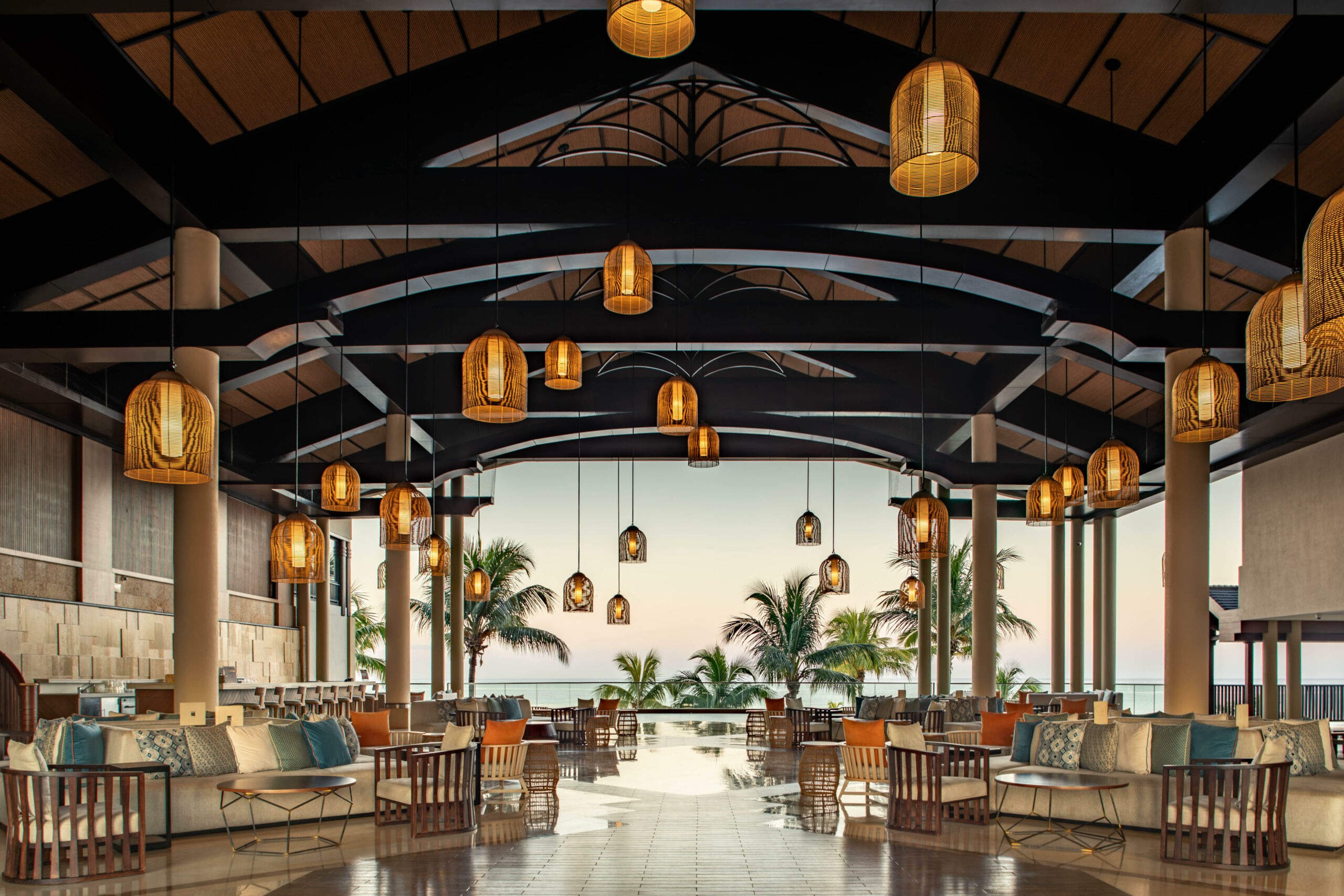The Birth of a Refreshing Idea
By Coca-Cola History
Coca-Cola History
The product that has given the world its best-known taste was born in Atlanta, Georgia, on May 8, 1886. Dr. John Stith Pemberton, a local pharmacist, produced the syrup for Coca-Cola, and carried a jug of the new product down the street to Jacobs’ Pharmacy, where it was sampled, pronounced “excellent” and placed on sale for five cents a glass as a soda fountain drink. Carbonated water was teamed with the new syrup to produce a drink that was at once “Delicious and Refreshing,” a theme that continues to echo today wherever Coca-Cola is enjoyed.
Thinking that “the two Cs would look well in advertising,” Dr. Pemberton’s partner and bookkeeper, Frank M. Robinson, suggested the name and penned the now famous trademark “Coca-Cola” in his unique script. The first newspaper ad for Coca-Cola soon appeared in The Atlanta Journal, inviting thirsty citizens to try “the new and popular soda fountain drink.” Handpainted oilcloth signs reading “Coca-Cola” appeared on store awnings, with the suggestion “Drink” added to inform passersby that the new beverage was for soda fountain refreshment. During the first year, sales averaged a modest nine drinks per day.
Dr. Pemberton never realized the potential of the beverage he created. He gradually sold portions of his business to various partners and, just prior to his death in 1888, sold his remaining interest in Coca-Cola to Asa G. Candler. An Atlantan with great business acumen, Mr. Candler proceeded to buy additional rights and acquire complete control.
The History of the Coca-Cola Contour Bottle
The Creation of a Cultural Icon
A Refreshing Legacy
One of the most famous shapes in the world is the iconic contour fluted lines of the Coca-Cola bottle. Renowned as a design classic and described by noted industrial designer, Raymond Loewy as the “perfect liquid wrapper,” the bottle has been celebrated in art, music and advertising. When Andy Warhol wanted a shape to represent mass culture, he drew the bottle and when Volkswagen wanted to celebrate the shape of the Beatle, they compared the car to the bottle.
How did the bottle become so iconic?
It began with the desire to protect brand Coca-Cola and was a cooperative project between The Coca-Cola Company and its bottlers.
An Iconic Beginning
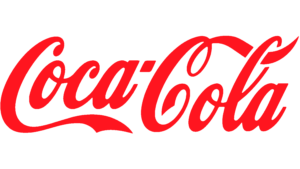 In 1899, two Chattanooga lawyers, Joseph Whitehead and Benjamin Thomas, traveled to Atlanta to negotiate the rights to bottle CocaCola. The product had been an increasingly popular soda fountain drink established a mere 13 years previously. In fountain form, CocaCola grew from an average of nine drinks per day sold in 1886 to being sold in every state of the US by 1900. Thomas and Whitehead wanted to capitalize on the popularity of the drink by bottling it to be consumed outside the four walls of a soda fountain.
In 1899, two Chattanooga lawyers, Joseph Whitehead and Benjamin Thomas, traveled to Atlanta to negotiate the rights to bottle CocaCola. The product had been an increasingly popular soda fountain drink established a mere 13 years previously. In fountain form, CocaCola grew from an average of nine drinks per day sold in 1886 to being sold in every state of the US by 1900. Thomas and Whitehead wanted to capitalize on the popularity of the drink by bottling it to be consumed outside the four walls of a soda fountain.
The contract the two signed was a geographic one and The CocaCola Bottling Company began franchising the rights to bottle Coca-Cola in cities across the U.S. By 1920, over 1,200 CocaCola bottling operations were established. Sales in both fountain and bottle form continued to increase and that popularity led to dozens of competitors trying to imitate the famous trademark of Coca-Cola to deceive the public into buying their drinks.
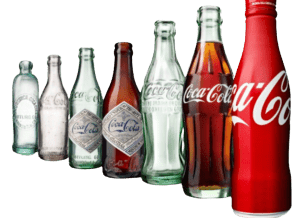 The bottles used in those days were simple straight-sided bottles that were typically brown or clear. The Coca-Cola Company required that the bottlers emboss the famous Coca-Cola logo onto every bottle. However, competitor brands like Koka-Nola, Ma Coca-Co, TokaCola and even Koke copied or only slightly modified the Spencerian script logo. These competitor bottles created confusion among consumers. While The Coca-Cola Company began litigation against these infringements, the cases often took years and the bottlers were constantly asking for more protection.
The bottles used in those days were simple straight-sided bottles that were typically brown or clear. The Coca-Cola Company required that the bottlers emboss the famous Coca-Cola logo onto every bottle. However, competitor brands like Koka-Nola, Ma Coca-Co, TokaCola and even Koke copied or only slightly modified the Spencerian script logo. These competitor bottles created confusion among consumers. While The Coca-Cola Company began litigation against these infringements, the cases often took years and the bottlers were constantly asking for more protection.
As a first step to help the bottlers, in 1906, The Coca-Cola Company introduced a diamond shaped label with a colorful trademark to stand out from the infringers. Unfortunately, Coca-Cola was often sold out of barrels of ice-cold water that would cause the labels to peel off. Some competitors like Koca-Nola even imitated the label as well!
Innovative Solutions
By 1912, The Coca-Cola Bottling Company sent a note all of its members noting that while The Coca-Cola Company had a distinctive logo, they did not have any way to protect their business. They proposed the members all join together and develop a “distinctive package” for their product. They worked with Harold Hirsch, the lead attorney for The Coca-Cola Company to best determine how to get a special bottle. In 1914, Hirsch made an impassioned plea for the bottling community to unite behind a distinctive package.
“We are not building Coca-Cola alone for today. We are building Coca-Cola forever, and it is our hope that Coca-Cola will remain the National drink to the end of time. The heads of your companies are doing everything in their power at considerable expense to bring about a bottle that we can adopt and call our own child, and when that bottle is adopted I ask each and every member of this convention to not consider the immediate expense that would be involved with changing your bottle, but to remember this, that in bringing about that bottle, the parent companies are bringing about an establishment of your own rights. You are coming into your own and it is a question of cooperation”.
On April 26, 1915, the Trustees of the Coca-Cola Bottling Association voted to expend up to $500 to develop a distinctive bottle for Coca-Cola. So, eight to 10 glass companies across the U.S. subsequently received a challenge to develop a “bottle so distinct that you would recognize if by feel in the dark or lying broken on the ground.” With that simple creative brief, the competition was on.
Roots in the Root Glass Company
In Terre Haute, Indiana, the Root Glass Company received the brief and had a meeting to begin to work on their design. The Root team was composed of C.J and William Root, Alexander Samuelson, Earl Dean and Clyde Edwards. Samuelsson, a Swedish immigrant who was the shop foreman, sent Dean and Edwards to the local library to research design possibilities. When the team came across an illustration of cocoa bean that had an elongated shape and distinct ribs, they had their shape. The team developed the bottle idea and Dean carefully sketched the now recognizable shape on heavy linen paper and under Samuelsson’s direction, a few sample bottles were struck.
The Root Glass Company put forth a patent registration under Samuelsson’s name which was granted on November 16th, 1915. That date was later incorporated into the lettering on the final design of the bottle. It is interesting to note that the patent submission was made without the signature embossed Coca-Cola script lettering. This was done to protect the secrecy of the design and the ultimate client.
In early 1916, a committee composed of bottlers and Company officials met to choose the bottle design. The Root version was the clear winner and The Coca-Cola Company and the Root Glass Company entered an agreement to have six glass companies across the U.S. use the bottle shape. The contract called for the bottles to be colored with “German Green” which was later called “Georgia Green” in homage to the home state of The Coca-Cola Company. It also called for the name of the city which was placing the glass order to be embossed on the bottom of the bottle. These city names entertained consumers for decades and led to kids to compare whose bottle was from further away for generations. The weight of glass was to be no less than 14.5 ounces, which when filled with the 6.5 ounces of Coca-Cola meant each bottle weighed more than a pound!
Bringing Everyone on Board
Even though the bottle had gone into production in early 1916, not all bottlers immediately jumped to change out their glass stock. For many bottlers, the glass bottles were the most expensive portion of their business and they needed to be convinced to make the change. The company began to do that with national advertising featuring the exclusive bottle. The first national calendar featuring the bottle appeared in 1918 and by 1920, most of the bottlers were using the distinctive bottle.
In 1923, the patent for the bottle was renewed. It was the custom of the patent office to issues the patent on the Tuesday of each week. For the 1923 patent, that Tuesday just happened to fall on December 25! As the new patent was issued, the date on the side of the bottle was changed to December 25th, 1923 and the bottle was quickly nicknamed the “Christmas Bottle.” Patents expire after 14 years (the bottle patent was renewed again in 1937), by 1951, all patents on the shape had expired. The company approached the Patent Office that the bottles shape, “distinctively shaped contour,” was so well known that it should be granted Trademark status. While it was highly unusual for a commercial package to be granted that status, on April 12th, 1961, the Coca-Cola bottle was recognized as a trademark, in part bolstered by the fact that a 1949 study showed that less than 1% of Americans could not identify the bottle of Coke by shape alone.
Now you know why the bottle happened, so how has it permeated culture over the years?
A Cultural Impact
The Coke bottle has been called many things over the years. One of the more interesting of the nicknames is the “hobbleskirt” bottle. The hobbleskirt was a fashion trend during the 1910s where the skirt had a very tapered look and was so narrow below the knees that it “hobbled” the wearer. The bottle was also called the “Mae West” bottle after the actress’s famous curvaceous figure. The first reference to the bottle as a “contour” occurred in a 1925 French Magazine, La Monde, which described the Coca-Cola bottle with a distinctive contour shape. To the general public, the shape is just “the Coke bottle.”
One of the interesting notes about the shape is that while it is almost universally recognized, the form has evolved over the years. Just as the original patent from 1915 was a slightly fatter shape than the bottle that went into production, todays aluminum bottle is a 22nd century update of the classic design. When King and Family sized packaging were introduced in 1955, Raymond Loewy was part of the team that worked to recast the bottle but still keep the proper proportions. The Company took advantage of this classic shape on the cover of the 1996 Annual Report when we placed a silhouette of the bottle with the caption, “Quick, Name a Soft Drink.”
While Andy Warhol is the artist most known for using the Coke bottle in art, the first popular artist to incorporate the bottle in a painting was Salvadore Dali, who included a bottle in his 1943 work, Poetry in America. Later artist like Sir Eduardo Paolozzi also used the form in the late 1940s. Robert Rauchenberg included Coca-Cola Bottles in his 1957 sculpture, A Coca-Cola Plan. However, Warhol’s use of the bottle in his 1962 show, The Grocery Store, cemented the “pop art” movement and enshrined the bottle as a favorite or succeeding generations of artists. Warhol’s quote from his 1975 book, The Philosophy of Andy Warhol, sums up the artist choice of the bottle to represent mass culture.
“What’s great about this country is that America started the tradition where the richest consumers buy essentially the same things as the poorest. You can be watching TV and see Coca-Cola, and you know that the president drinks Coke, Liz Taylor drinks Coke, and just think, you can drink Coke, too. A Coke is a Coke and no amount of money can get you a better Coke than the one the bum on the corner is drinking. All the Cokes are the same and all the Cokes are good. Liz Taylor knows it, the president knows it, the bum knows it, and you know it.”
Today, as we celebrate 100 years of the patent of the famous contour shaped Coca-Cola bottle, it is indeed a shape for all who want to enjoy an ice cold, delicious and refreshing Coca-Cola.
10 Facts about Coca-Cola’s Sustainability History
Sustainability is not something new at The Coca-Cola Company. The Company’s sustainability efforts cover a wide range of topics including the following: water, women, community wellbeing, sustainable packaging, climate protection, human and workplace rights, and sustainable agriculture.
Such efforts began over 100 years ago and have since become an integral part of the Company. While there are countless sustainability projects and initiatives started by the Company, there are some monumental moments that have helped shape the company’s efforts. These efforts are highlighted in this timeline of events.
1917
The Coca-Cola Company began its partnership with The Red Cross. During World War I, the Coca-Cola system ran annual Red Cross drive campaigns which continued for over a decade. This partnership remains strong today and has been essential to the company’s involvement in disaster relief throughout the years.
1935
Lettie Pate Evans joined the Board of Directors as the 1st woman to serve on the board of a major company.
1963
The Coca-Cola Company produced its first diet drink, Tab. Tab was introduced before the early growth of the low-calorie soft drink segment, and the beverage was developed for consumers who wished “to keep tab on their calories.” Several women chemists played a critical role in the development of Tab.
1966
The Coca-Cola Company launched “The Nutrition Project”, assigning an international team of scientists and food technologists the task of finding a solution to the “protein gap” facing the impoverished nations of the world and provide more light, protein-rich beverages to consumers. This project led to the introduction of the brands Saci, Sanson and Taí, three protein-rich energy beverages developed in Latin America, utilizing the local ingredients such as soybeans and whey as protein source ingredients for the beverages.
1984
The Coca-Cola Foundation was founded. The Coca-Cola Company is committed to giving back 1 percent of its prior year’s operating income annually through the foundation. The foundation serves three priority areas: women, water and well-being.
2001
The Coca-Cola Company established the Coca-Cola Africa Foundation, which has worked to prevent and treat HIV/AIDS in Africa. Since it was established, the Coca-Cola Africa Foundation has launched numerous projects and initiatives throughout Africa.
2007
The Coca-Cola Company announced a transformational partnership with the World Wide Fund for Nature (WWF) to address challenges related to freshwater conservation. This partnership focused on five core areas including the following: conserve seven of the world’s most important freshwater basins, improve water efficiency within the company’s operations, reduce the company’s carbon emissions, promote sustainable agriculture and inspire a global movement to conserve water.
2009
The Coca-Cola Company introduces PlantBottle Packaging – the first ever recyclable PET plastic beverage bottle made 30 percent from plants. The Coca-Cola Company has continued to develop sustainable packaging, including the creation of the world’s first prototype PET bottle made entirely from plant materials in 2015.
2010
The Coca-Cola Company launched the 5by20 Initiative. The goal of this initiative is to enable the economic empowerment of 5 million women entrepreneurs across the globe by 2020. Through the initiative, women are offered access to business skills training courses, financial services and connections with peers or mentors.
2013
The first EKOCENTER is established. EKOCENTER is a modular community market that is run by local woman entrepreneurs and provides safe drinking water, wireless communication, electricity and other functionality to jump-start entrepreneurship opportunities and community development. The 100th EKOCENTER was opened in 2016 and the project continues to grow around the globe. This project also complements the 5by20 initiative that was launched in 2010.
The Coca-Cola Company’s sustainability efforts and goals continue to develop as the years go on and their impact can be found across the globe. Within the last 5 years, the Coca-Cola Company has launched new initiatives and achieved many goals, such as accomplishing its 100 percent water replenishment goal five years ahead of schedule.
The company will not stop once it has accomplished a goal; it creates new initiatives and works to create a bigger impact. The history of sustainability in the Coca-Cola Company is an indication of how far the Company has come and how much farther it can go in the future.

